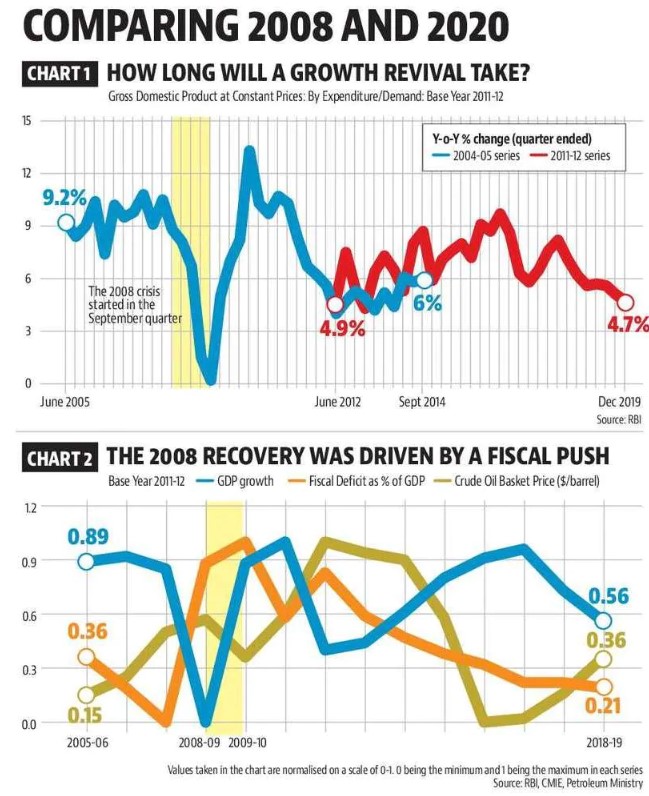Focus: GS-III Indian Economy, Prelims
Why in news?
- The National Statistical Office (NSO) released the provisional estimates of national income for the financial year 2019-20 in which the real GDP was estimated to have expanded by 4.2% in the full fiscal year – slowest pace of growth in 11 years.
- The release also detailed the estimates of the Gross Value Added, or GVA, at basic prices for the four quarters of 2019 as well as the comparable quarterly data for the two preceding years.
- The GVA numbers for the first three quarters revealed significant revisions from the previously released numbers.
What is Gross Value Added (GVA)?
- As per the United Nations System of National Accounts (SNA) – Gross Value Added (GVA) is defined as the value of output minus the value of intermediate consumption;
- and GVA is a measure of the contribution to GDP made by an individual producer, industry or sector.
- In simple terms, GVA gives the rupee value of goods and services produced in the economy after deducting the cost of inputs and raw materials used.
- GVA can be described as the main entry on the income side of the nation’s accounting balance sheet, and from an economics perspective represents the supply side.
How does India Measure GVA?
- India had been measuring GVA earlier using ‘factor cost’.
- In the new series, in which the base year was shifted to 2011-12 from the earlier 2004-05, GVA at BASIC PRICES became the primary measure of output across the economy’s various sectors and when added to net taxes on products amounts to the GDP.
Categories of NSO’s GVA Data:
When it comes to GVA data provided by NSO- the sectoral classification provides data on eight broad categories:
- Agriculture, Forestry and Fishing
- Mining and Quarrying
- Manufacturing
- Electricity, Gas, Water Supply and other Utility Services
- Construction
- Trade, Hotels, Transport, Communication and Services related to Broadcasting
- Financial, Real Estate and Professional Services
- Public Administration, Defence and other Services.
Why are the latest GVA numbers attracting attention?
- The May 2020 NSO estimates saw significant downward revisions in the GVA data pertaining to the first three quarters for five of the eight sectors, dragging down the Q1, Q2 and Q3 GVA growth rates.
- The revisions, combined with a lacklustre performance in the fourth quarter, including a sharp weakening in momentum at two of the largest services sectors ultimately lowered the overall annual GVA growth estimate for 2019-20 by as much as 1 percentage point to 3.9%, from the 4.9% forecast in February.
- Agriculture’s growth for the first three quarters has been marginally increased while Public Administration too as a category has had its numbers boosted for the second and third quarters.

How relevant is the GVA data given that headline growth always refers to GDP?
The GVA data is crucial to understand how the various sectors of the real economy are performing.
The output or domestic product is essentially a measure of GVA combined with net taxes.
What are the drawbacks in using GVA to measure economic growth?
The accuracy of GVA as a measure of overall national output is heavily dependent on the sourcing of data and the fidelity of the various data sources in capturing the huge number of activities that constitute a nation’s economic life.
-Source: The Hindu





